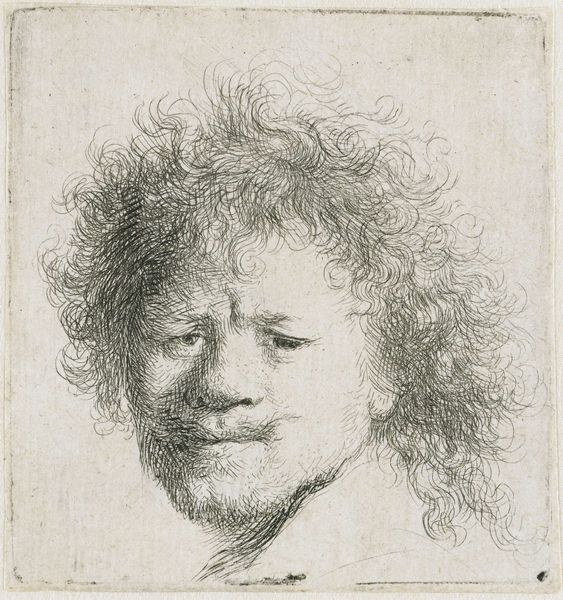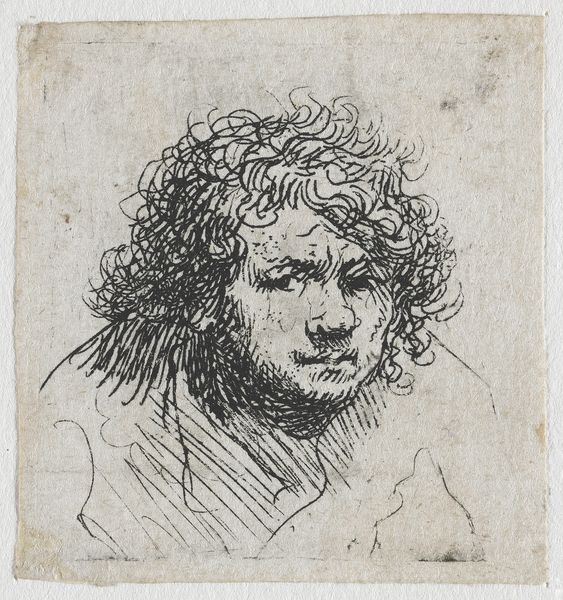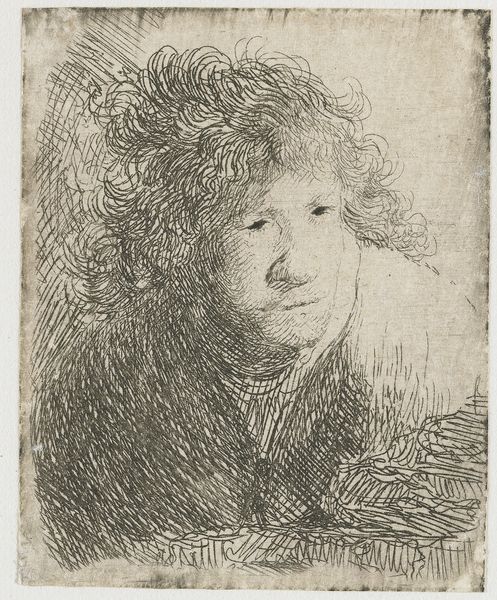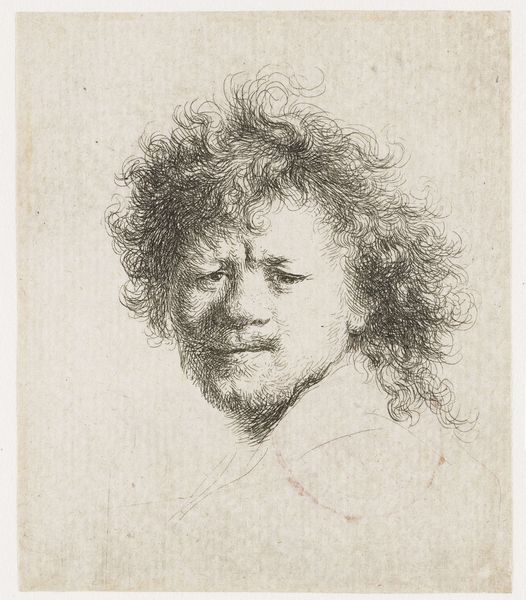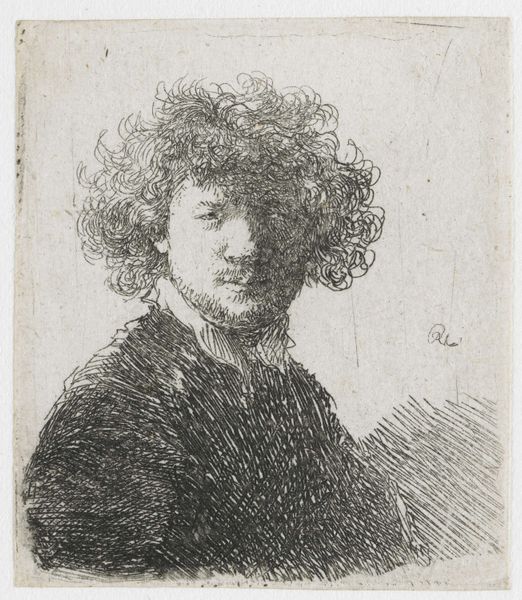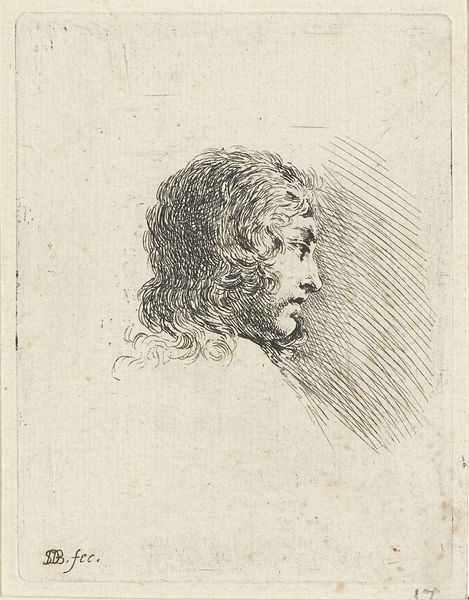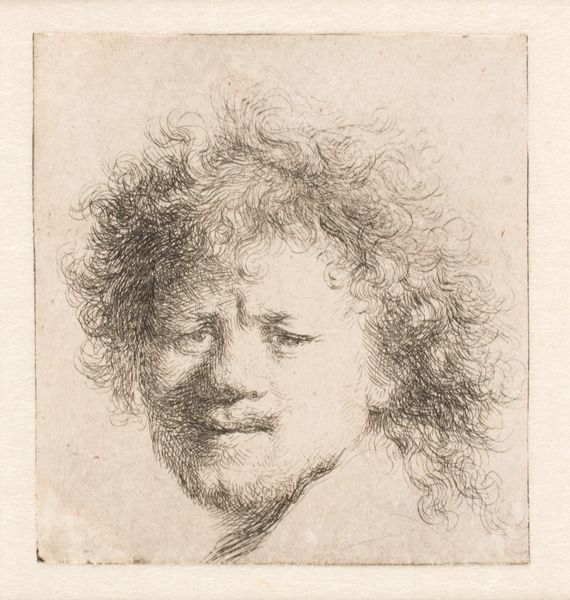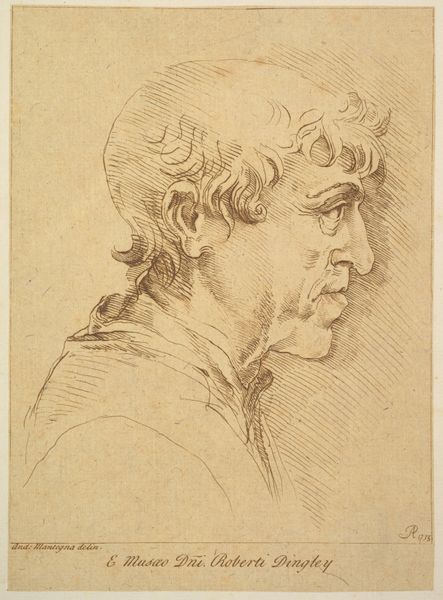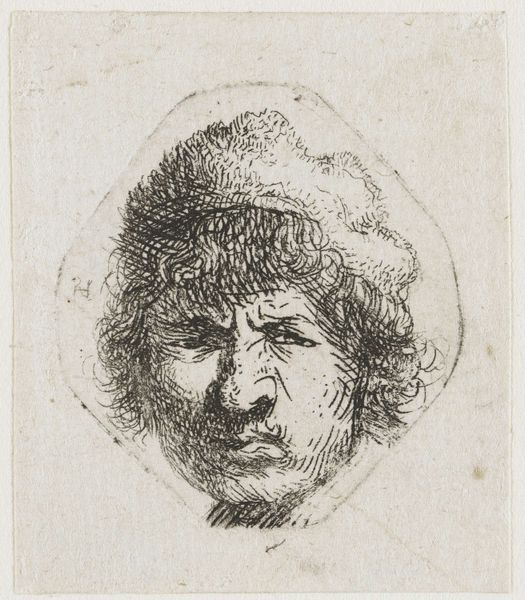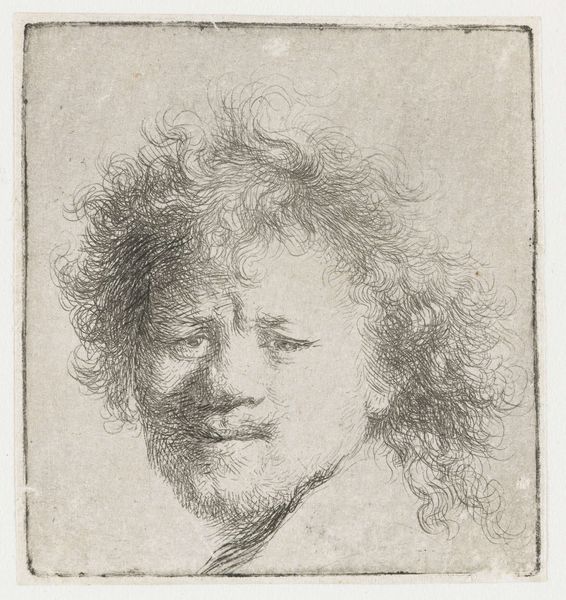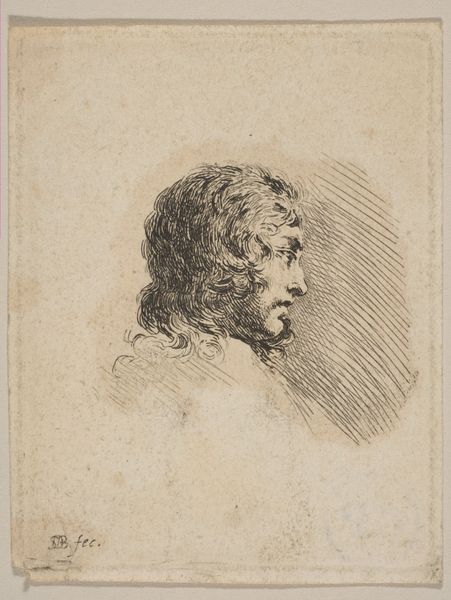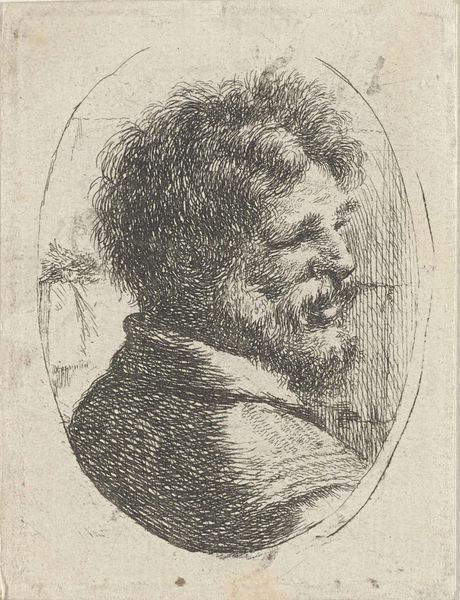
print, etching
#
portrait
#
baroque
# print
#
etching
#
old engraving style
#
figuration
#
form
#
portrait drawing
Dimensions: height 138 mm, width 108 mm
Copyright: Rijks Museum: Open Domain
Honoré Coussin made this print of a young man’s bust in the 18th century. He most likely used etching, a printmaking technique that relies on the corrosive properties of acid. The etcher covers a metal plate with a waxy, acid-resistant ground, then scratches an image into the ground with a needle. When the plate is immersed in acid, the exposed metal is eaten away, creating lines that hold ink. The printmaker then applies ink to the plate, wipes away the excess, and presses paper against the plate to transfer the image. The process, though mechanical, allows for a remarkable sensitivity to line. Note how Coussin uses a dense network of fine lines to model the face and hair, creating a sense of depth and texture. The way in which the etcher can ‘draw’ on the plate lends a sense of immediacy to the final print. The resulting print, while reproducible, retains the mark of the artist’s hand, reminding us that even in the age of mechanical reproduction, craft and skill still matter.

